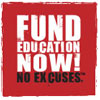by: Gary Fineout & Terry Spencer|Associated Press/Orlando Sentinel
December 14, 2015
Less than a mile from the state Capitol, a former steakhouse shows little evidence that it was once part of a movement to change Florida’s schools.
It was on this location nearly two decades ago that the leader of a prominent Tallahassee church put together one of the state’s first charter schools. The space where customers grazed the salad bar became student desks. The parking lot became home to two portables used for classrooms.
The only trace of C.K. Steele/LeRoy Collins Community Charter Middle School is a sign in the parking lot. It closed in 2014.
But over the course of the preceding decade, the school received nearly $540,000 to help with capital purchases under a program enacted by the Republican-controlled Legislature and supported by the past three governors. Bethel Missionary Baptist Church owned the building when the school opened and it still does.
Charter schools, which are public schools run by private groups, have received more than $760 million from state taxpayers since 2000, according to an Associated Press analysis of state Department of Education records. Schools can use the money for construction costs, rent payments, buses and even property insurance.
Yet charter schools in 30 districts have wound up closing after receiving as much as $70 million combined in such funding, the AP’s analysis showed.
Taxpayers usually can’t recover the capital money invested in those schools because most of it has been spent on rent or leasing costs. The Department of Education reported it has taken back just $133,000 in the past three years from schools that closed.
“Even if it’s the Taj Mahal, if you lease it and it closes there’s no way for the district to recoup that,” said Jenna Hodgens, who is in charge of dealing with charter schools for Hillsborough County schools.
In Central Florida, a total of 18 now-closed charter schools in Orange, Seminole and Lake counties have received nearly $8.3 million in capital outlay dollars since 2000. Four schools received more than $1 million apiece. As in other parts of the state, schools often rented facilities rather than purchasing them.
Some officials say they don’t like to see charter schools getting money for facilities when traditional public schools are underfunded. Bill Sublette, chairman of the Orange County School Board, said the district struggles to keep pace with the growing student population, even with voters’ approval last year of a half-cent sales tax, which is expected to generate $2 billion. The school district gained about 5,000 students this year alone.
“We can’t afford to lose any money any outside sources because we are scraping by just to keep up with the growth in our community,” said Sublette, who added that he nonetheless supports charter schools.
In Orange, Summit Charter School took out a mortgage for a property previously owned by a private school in Maitland for $1.3 million in 2000. When the Summit School closed in 2011, it still owned a significant amount of money to its mortgage holder, which foreclosed on the property. The school had been plagued by money troubles for years.
The area’s most recently closed school, Milestones Community School in Leesburg, received $1.3 million between 2002 and 2015. The school leased facilities from a church, said Sherri Owens, a spokeswoman for Lake County schools. The Florida Conference of Seventh-Day Adventists owns the school’s former facilities, according to property records.
Seminole County Public Schools worked with one of its schools, Rays of Hope Charter School, to purchase a property in Sanford. The district took over the facility when the school closed in 2009. The property is now part of a complex that now includes the district’s teacher store and training center, as well as Journeys Academy, a district-run alternative school.
Across the state, Democratic lawmakers have criticized the expenditures, especially since the Legislature have curtailed construction money for traditional public schools in recent years.
Charter schools, which proponents see as a way for some families to move their children into schools better suited to their needs, have grown in popularity since they were authorized in the 1990s. There are more than 650 charter schools statewide with more than 250,000 students. These schools receive money from school districts to pay for day-to-day expenses like salaries.
But the growth of charter schools has trigged a tug-of-war in the Legislature over how much money they should also get to pay for capital needs such as classrooms and transportation. The capital money directed to charter schools reached a high of $90 million two years ago but dropped to just less than $48 million this year.
Charter school backers say they need state help because, unlike school districts, they can’t rely on local property taxes to help pay capital expenses.
“Banks don’t usually lend to charter schools,” said Lynn Norman-Teck, executive director of the Florida Charter School Alliance. “You can’t walk into Bank of America and say, `I have a good idea and I may have 100 kids show up.’
read article here.
Please support our work.
Join us. Stay informed.




